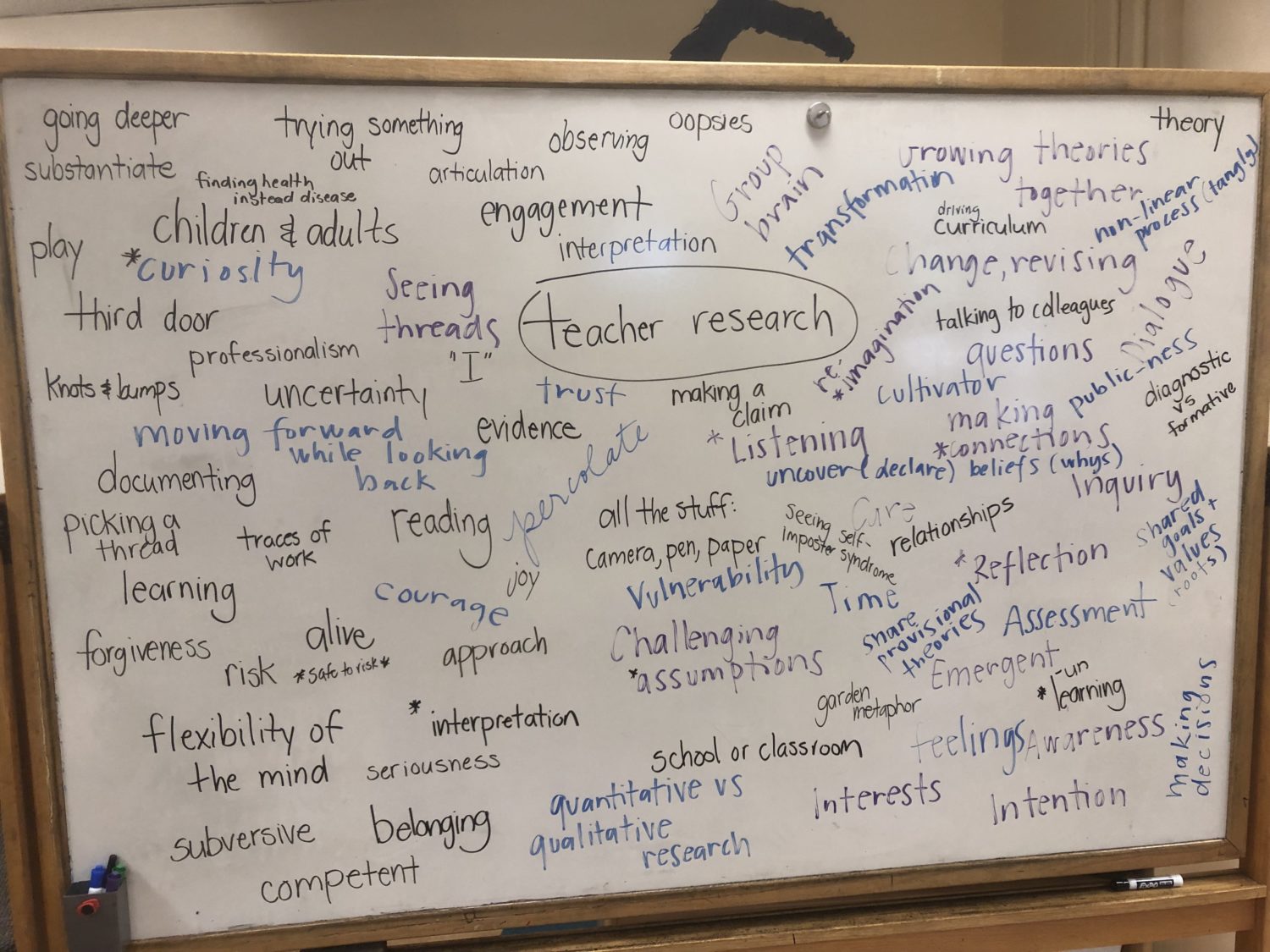Setting Intentions to Guide Our Learning

Last week, Opal School staff came together to revisit our thinking about teacher-research. We cracked open “teacher-research” to unpack the varied meanings the idea holds to us (the photo shows the dry erase board by meeting’s end. We (re-)visited a piece of writing our colleague Hannah Chandler wrote about the practice two years ago this week (reminding us that the Opal School blog archive is full of useful texts!). We examined artifacts of learning experiences happening in the classrooms to project next steps in teacher-research.
At Opal School (as in schools around the world), fall is a time of establishing intentions, meeting children, and finding where those meet up. Our work as teacher-researchers depends on where we place our attention – and our attention is guided by our intention.
As we have over the last several years, Opal School teachers started the year by articulating their intentions (You can read last year’s here, 2017’s here, and 2016’s here.) This year’s letters were shared with families at Back-to-School Night, and you can read the Beginning Community’s (children ages 3-5) letter here; the Primary (grades k-2) Community’s here; Intermediate Community’s (grades 3-5), here. As I read this year’s, I’m struck by the commitment to constructing a pro-democracy, anti-bias practice that recognizes simultaneously that kindness can be developed in schools – and that kindness is not enough.
I’ll be curious to hear from you, Reader:
What stands out to you in these letters?
How do you imagine that these letters will strengthen these educators’ practice of teacher-research?
What kind of learning will they inspire for children?
How are you articulating and sharing your intentions?
